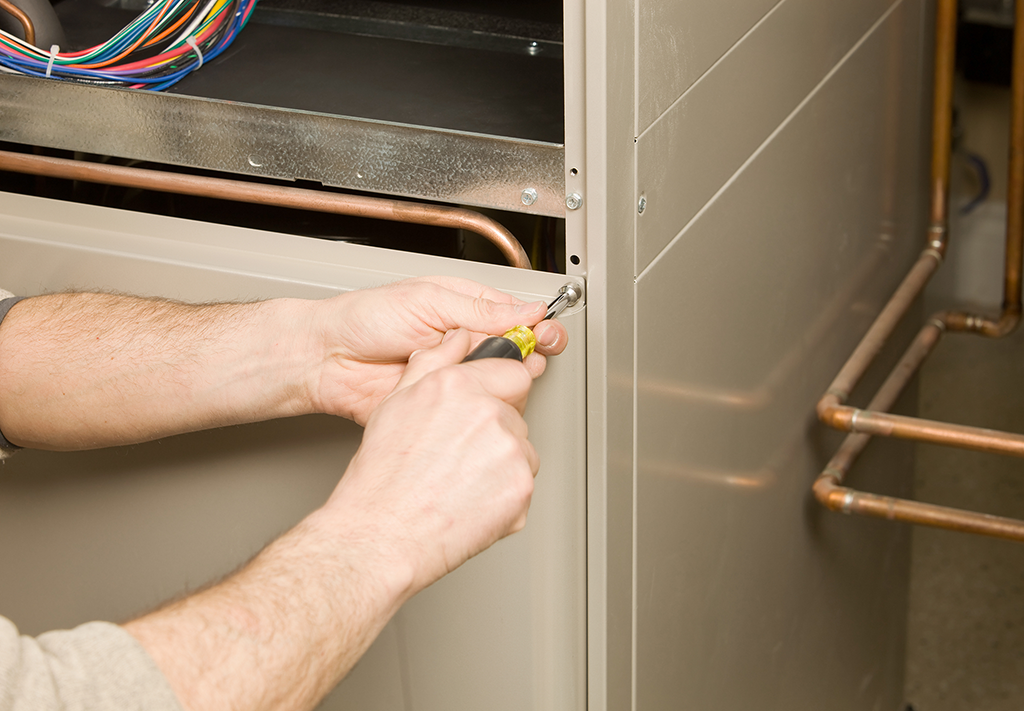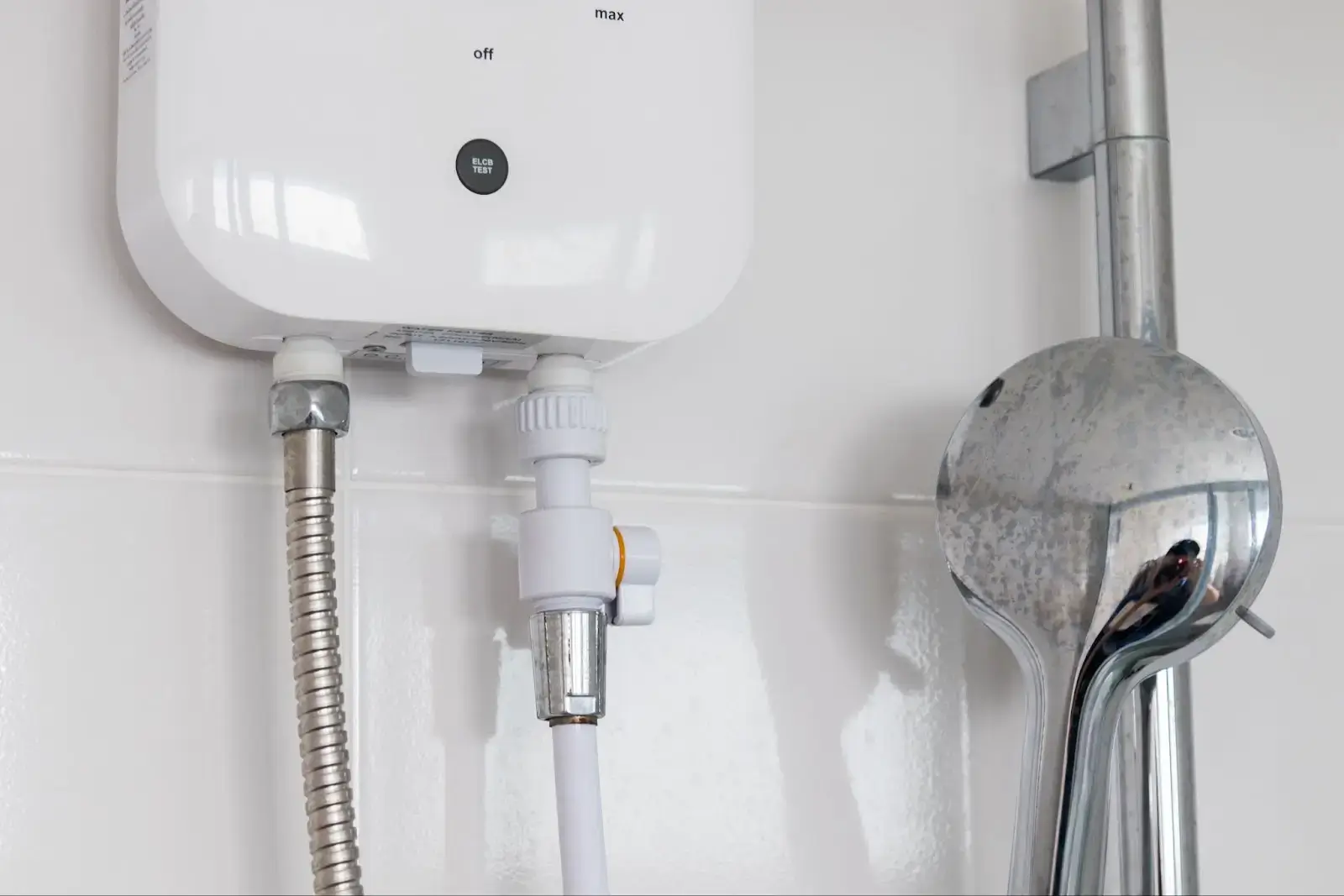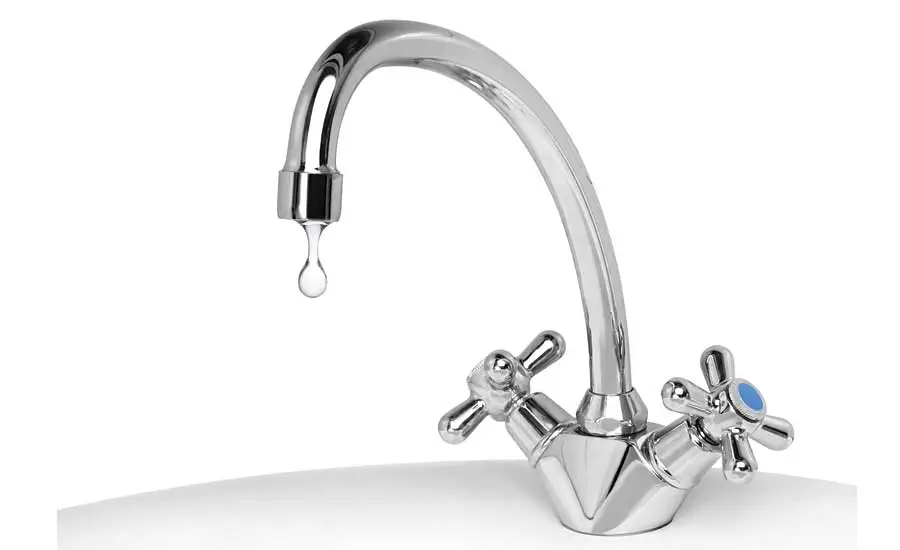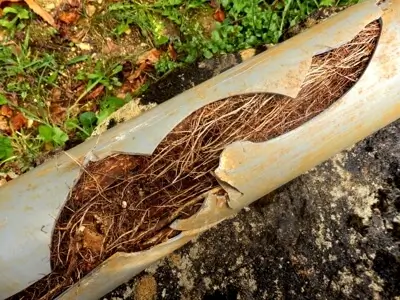When winter blows in with its icy chill, households start cranking up the furnace heat in search of cozy comfort. But that welcoming warmth can turn downright deadly if you aren't taking proper precautions against an insidious threat - carbon monoxide poisoning.
This odorless, colorless gas is often dubbed the "silent killer" because of its ability to quietly incapacitate without obvious signs. And unfortunately, furnaces happen to be one of the most common residential sources for potential CO leaks if neglected or improperly vented. From headaches and nausea to fatalities, the consequences can get grim quickly.
Before you fire up that furnace this season, take some time to protect your household against these invisible risks. We'll guide you through understanding CO dangers, recognizing leak symptoms, installing detection systems, and most importantly - implementing preventative maintenance checklists to keep your furnace sealed tight. Don't let your safety get left out in the cold!

Understanding Carbon Monoxide and Its Dangers
Before we dive into preventing carbon monoxide threats, it's important to understand first exactly what carbon monoxide (CO) is and why it's so hazardous to your health and safety. Let's break the basics down:
The Unseen Menace
Carbon monoxide is a poisonous gas that doesn’t have a smell or color. There is no way for your senses to detect its presence. It's created by the incomplete burning or combustion of fuels like natural gas, oil, wood, propane, and even gasoline.
This makes CO an extra sneaky danger because it can accumulate in your living spaces without any obvious signs. You can't see or smell the clouds forming! Yet without realizing it, you and your family could start inhaling the toxic fumes.
The "Silent Killer"
The inability to detect carbon monoxide is exactly what makes it so risky. Often called the "silent killer," this gas replaces oxygen in your bloodstream when inhaled. Your body's cells and organs literally get starved of oxygen, suffocating you from within.
Besides depriving oxygen flow, CO also causes poisonous compounds to bond with your red blood cells. The combination creates cellular damage that grows progressively worse the longer the exposure.
Symptoms That Escalate
Initial carbon monoxide poisoning symptoms are easy to brush off as just a passing flu. Headache, fatigue, nausea, and vomiting frequently come first. Recognizing CO early relies on identifying the pattern along with sources of potential leaks.
Ignoring the warning signs, however, quickly leads to far more dire effects. Higher concentrations of CO cause impaired vision, dizziness, confusion, and eventual unconsciousness. Prolonged exposures ultimately result in brain damage, cardiac complications, and even death.
From its stealthy presence to the escalating physical dangers it presents, carbon monoxide is an insidious threat. It requires constant vigilance around combustion appliances. But by recognizing leak sources and keeping your senses tuned for initial symptoms, the risks of CO poisoning remain quite preventable with proper precautions - starting with that furnace!
Common Sources of Carbon Monoxide in Homes
Now that we've covered the insidious basics of what carbon monoxide actually is, it's time to reveal the likely culprits allowing those poisonous clouds to form inside your home's four walls. Like any criminal conspiracy, knowledge of the key players puts you one step ahead in the prevention game.
The Household Offenders
Since carbon monoxide stems from incomplete combustion of common fuels, any household appliances involving flames or fumes obviously pose potential risks. You'll want to keep a trained eye on the usual suspects:
- Furnaces (gas or oil-fired)
- Water Heaters (gas or oil-fired)
- Fireplaces (wood or gas-burning)
- Stoves/Ovens
- Clothes Dryers (gas-powered)
- Grills and Smokers
- Space Heaters
Essentially any appliance that burns solid, liquid, or gaseous fuels to produce heat and energy counts as a potential CO source if not properly vented and maintained. Letting potential leaks and combustion inefficiencies go unchecked creates the conditions for poisonous runoff.
The Seasonal Shift Hazards
But even with those pesky appliances unavoidable, other seemingly benign factors frequently play an accomplice role enabling CO accumulation. Things like:
- Poor Ventilation: Houses "buttoned up" for winter can trap combustion gases inside without proper airflow. The same goes for running exhaust fans while burning open flames.
- Blocked Venting: Chimneys, furnace vents, or exhaust flues obstructed by debris like soot buildup, bird nests, or even drifting snow plumes divert toxic gases indoors.
- Attached Garages: Leaving cars idling or malfunctioning gas-powered equipment in attached garages allows CO fumes direct access into living spaces.
- Cold Weather Combustion Adjustments: As furnaces work harder during winter months with more frequent cycling, normal combustion can be thrown out of whack. Older systems struggle to maintain safe levels.
Essentially, the chillier seasons set the stage for perfect carbon monoxide crime scenes due to both lifestyle tendencies and household systems pushed to their limits. Staying vigilant about all potential sources—both the usual suspects and often-overlooked contributors—is a matter of life and death!
Recognizing Signs of a Faulty Furnace and CO Emission
With those crafty carbon monoxide sources now on your radar, the next preventative step is sharpening your detective skills to identify potential leaks or malfunctioning appliances before they can put your family at risk. Therein lies the challenge - CO poisoning symptoms often mimic common illnesses initially.
The Misleading Early Warning Signs
Feeling a little under the weather with flu-like symptoms? It could just be a basic sinus bug... or it might signify the early effects of carbon monoxide exposure. The initial signs are very similar:
- Headaches
- Dizziness
- Fatigue/Weakness
- Nausea/Vomiting
- Impaired Vision
The one major red flag that separates CO poisoning? If multiple household members suddenly experience these symptoms concurrently despite no other illness going around, you'll want to perk up your senses. It could indicate a poison payload has been released indoors.
Of course, pinpointing appliance culprits gets trickier, especially when it comes to your furnace system handling the household heating load 24/7. Some of the more glaring potential offenders include:
- Soot Buildup Around Furnace: A yellowing film could mean improper combustion allowing CO to escape rather than venting outside properly.
- Cracked Heat Exchanger: These combustion chamber cracks essentially punch exhaust holes straight into your home's air supply.
- Loose/Disconnected Vent Pipes: If those metal vent pipes leading out of your furnace show separations or corrosion holes, CO has a straight shot indoors.
- Excessive Furnace Module Moisture: Leaking, fogged-up sight glasses on modern furnaces frequently occur when exhaust gases start recirculating the combustion air supply improperly.
While certainly not an exhaustive list, any combination of initial sickness symptoms coupled with these more glaring physical furnace issues warrants immediate caution and investigation. With carbon monoxide, assuming household safety is never an option!
Carbon Monoxide Detectors - Your First Line of Defense
Even with your senses on high alert for hints of CO poisoning risks, this invisible killer still maintains a serious home-field advantage when it comes to stealth. That's why every household needs to install active detection systems - carbon monoxide alarms primed to sound the emergency siren before it's too late.
The Importance of CO Alarms
Often misconstrued as souped-up smoke detectors, CO alarms are specifically designed to identify and announce dangerous accumulations of carbon monoxide gas that your eyes and nose alone can't perceive. Think of them as proverbial canaries in your home's coal mine.
Powered by electrochemical sensors that continuously monitor ambient air quality, these alarms provide an early warning system when toxicity thresholds get breached. At the first hint of CO concentrations climbing to unsafe levels, these high-decibel sirens erupt to ensure you evacuate promptly.
Proper Installation Is Critical
Of course, like any defense strategy, your CO detectors need to be properly positioned with strategic forethought too. Blindly mounting them in random locations mitigates their effectiveness significantly.
Ideally, you'll want to place an alarm on each level of your home and near every sleeping area or bedroom at minimum. Avoid situating units inside furnace rooms or too close to combustion appliances which could desensitize sensors over time. And for ultimate safety redundancy, create monitoring overlaps where multiple detectors can reinforce coverage gaps.
Maintenance Maximizes Protection
Once CO alarms are installed with either hardwired or battery-powered setups, consistent maintenance becomes crucial to ensure they will actually work when needed.
- Test ALL units monthly by pressing the test/reset button to trigger sirens
- Vacuum grated alarm covers twice annually to remove dust buildups
- Replace any detectors exceeding their 5-7 year service lifespan immediately
- Ensure proper battery backup power remains available on hardwired units
Don't Disregard Limitations
While invaluable for monitoring indoor air quality 24/7, CO detectors aren't necessarily a panacea either. They can only identify gas accumulations that occur, not physically eliminate sources outright.
Detectors also require strategic positioning since carbon monoxide can accumulate unevenly in different areas. Readings may provide misleading safety data if units only get installed haphazardly.
These limitations simply underscore the importance of using CO alarms as your first line of defense, not your last! Preventing poisonous gas accumulations in the first place through appliance maintenance and safe operating practices remains paramount too.
Regular Maintenance and Professional Inspection
Installing carbon monoxide alarms provides a vital early warning system for your household's safety net. But effectively preventing CO inundation in the first place? That responsibility falls on your diligent maintenance routines for fuel-burning appliances like your furnace system.
The Necessity of Annual Inspections
Modern furnaces contain sophisticated combustion chambers with finely-tuned airflow and venting systems to facilitate safe, efficient operation. But these systems require annual professional tune-ups to ensure everything remains calibrated and sealed up tight.
During these comprehensive inspections, HVAC technicians thoroughly clean and inspect every component related to the furnace's heating process. From burners and ignition assemblies to heat exchangers and exhaust flues. They ensure proper venting, check combustion levels, test safety switches, and optimize airflows.
These meticulous checkups accomplish two crucial tasks for preventing CO hazards:
- Combustion Scrutiny - Identifying deteriorating components that could allow toxic exhaust leaks before they occur
- Safe Settings - Re-establishing proper fuel/air mixtures and venting to minimize incomplete combustion risks
Think of it like an annual emissions test, except for the pollution happening inside your home if neglected! Skipping this professional-grade maintenance greatly increases the likelihood of CO troubles brewing unchecked.
The Great DIY Debate
Of course, most homeowners understand the basics of routine air filter replacements and the like. But does handling those simple tasks instill a false sense of confidence about tackling more advanced furnace maintenance work solo?
While saving money is always appealing, the truth is that the majority of essential heating system service duties require specialized training, tools, and safety certifications that DIYers usually do not possess. Testing combustion levels, calibrating gas pressures, diagnosing electrical faults - these preventative steps hold serious risks if not executed with utmost proficiency.
As crucial as changing your air filters may be, the bulk of CO prevention stems from tasks strictly requiring professional HVAC expertise. Attempting to pinch pennies by skimping on annual inspections from certified technicians essentially equates to Russian roulette with your indoor air quality.
So by all means, handle what you're capable of to keep your furnace running smoothly in between visits. Just be sure to make those annual professional maintenance calls before cold nights turn potentially perilous!
Safe Furnace Operation Practices
With professional inspections keeping your furnace tuned up and sealed tight, you've already eliminated a major piece of the CO prevention puzzle. But even a newly serviced system demands continuous safe operation practices to minimize poisoning hazards year-round.
Guidelines for Furnace Use
Treating your furnace as an always-on household appliance you can simply "set and forget" is a surefire recipe for danger. Despite their modern designs and safety features, fuel-burning furnaces still require intentional monitoring and responsible usage habits:
- Maintain Clearances - Ensure all combustibles are kept a safe distance from your furnace's immediate area to prevent fire/toxic air risks. No storage boxes, chemicals, or debris should crowd the equipment.
- Fresh Air Supply - Never operate your furnace in enclosed spaces without adequate ventilation and airflow. That incoming combustion air is essential for complete, safe fuel burning.
- Filter Replacements - While a professional tune-up optimizes airflow, routinely replacing or cleaning your furnace filters helps sustain it. Clogged filters create unwanted restrictions that impact combustion dynamics.
- Open Venting - Keep your furnace's venting system unobstructed inside and out - that includes exhaust flues, chimneys, outdoor vent clearances, and attic/roof termination areas. Any blockages can force toxic gases back indoors.
Essentially, you need to treat your furnace with the same level of care and respect as any open-flame appliance. Creating favorable conditions for proper venting, airflow, and heat dispersion remains critical for avoiding CO production in the first place.
Maintaining Safe Operation
Beyond those general usage guidelines, also be sure to address any performance issues or irregularities promptly as they arise. Things like:
- Excessive or uneven combustion odors
- Visible soot streaking around equipment
- Erratic cycling, overheating, or delayed ignitions
- Moisture building up on windows/surfaces near the furnace
Any indicators that something seems "off" with your system's typical operation should be cause for professional inspection before compounding into bigger problems.
Common Mistakes
On the flip side, avoid running combustible appliances (including your furnace) under clearly unsafe conditions. Never attempt to operate:
- After recent earthquakes or severe weather events without clearing any damage
- In homes with extremely low air circulation or inadequate fresh air intake
- Without routinely inspecting/clearing external venting areas first
At the end of the day, safe furnace operation requires intentional diligence and a commitment to common sense with every firing cycle. Treat that household heating system with the same care required for any combustion appliance!
Advanced Furnace Options for Enhanced Safety
Even with every preventative measure and safe operation practice implemented to a tee, today's homeowners can opt for even more robust carbon monoxide prevention through advanced furnace designs. These systems essentially engineer out many of the hazard variables from the get-go.
The Sealed Combustion Advantage
Rather than relying on your home's interior air for the combustion process, sealed combustion furnaces incorporate direct venting that pulls 100% fresh air from outside while exhausting emissions back outdoors too. These dedicated intake/exhaust pipes create a closed combustion chamber completely isolated from your living spaces.
As the name implies, this "sealed" design essentially eliminates any pathways for carbon monoxide to escape into your home, even in worst-case scenarios. Leaky heat exchangers or cracked chambers can't contaminate household air because exhaust gases get directly shunted outside before mixing occurs.
Modern sealed combustion furnaces frequently take this secure venting principle a step further by incorporating two individual heat exchangers - segregating combustion gases even more thoroughly from heated airflows distributed indoors. Maximum safety with maximum efficiency!
While requiring more elaborate installation compared to traditional atmospheric models, these sealed combustion overhauls provide ultimate CO risk mitigation that can really pay off in peace-of-mind... especially for aging homes with poor interior airflow dynamics.
Efficiency Upgrades
Of course, today's high-efficiency sealed combustion furnaces don't just fortify safety - they deliver major comfort and cost-saving benefits too through advanced designs like:
- Modulating Gas Valves - Precisely adjusting gas input in real-time based on heating demands rather than wasteful on/off cycling.
- Variable-Speed Blowers - Automatically optimizing airflow volumes and velocities for more even, consistent temperatures throughout your home.
- Secondary Heat Exchangers - Capturing more flue heat escaping the primary exchanger for higher AFUE efficiency ratings.
While premium pricing gives some sticker shock upfront, these feature-rich furnaces rapidly pay back your investment via drastically lower utility bills and superior HVAC performance. An upgrade that enhances your respiratory health and lowers your carbon footprint? Now that's true win-win furnace technology!
Emergency Response to CO Detection
With all those preventative measures like detectors, annual inspections, and safe operating habits in place, you've stacked the odds heavily in your favor against carbon monoxide poisoning risks. But even the most diligent households can't completely eliminate unexpected hazards. When your CO alarms suddenly start wailing, you need to spring into action quickly.
Steps to Take if CO is Detected
The very first priority? Getting yourself and all other occupants out of the area and safely into fresh air immediately. Don't wait, don't dawdle - evacuate your home or building right away!
Once safely outside, call 911 to summon emergency responders trained to properly handle CO leaks and poisoning situations. Articulate exactly what triggered your alarms so they can be fully prepared upon arrival.
If any occupants exhibit severe poisoning symptoms like nausea, dizziness, or loss of consciousness, alerting EMS responders allows them to initiate critical care treatments rapidly. CO exposure can turn gravely serious fast, so don't try toughing it out!
Only after evacuating and contacting emergency services should you even consider trying to locate and shut off the appliance causing the leak. Attempting to sleuth out the source yourself in an enclosed, concentrated CO environment simply puts you back in harm's way unnecessarily.
Post-Detection Response
Once emergency crews and HVAC professionals have thoroughly vented the contaminated areas and confirmed the leak sources, resist the urge to immediately reoccupy until they authorize it safe to do so. Even at moderately dangerous CO levels, simply airing out your home for a brief time period won't be sufficient to restore safe conditions.
Only after approved mitigation steps should you consider returning and calling certified service technicians to permanently correct any root problems - whether that's replacing a malfunctioning appliance or conducting thorough re-inspections to ensure no lingering gases remain.
While the dramatic alarm klaxons always prove jarring, stay calm and resist the urge to try heroics yourself. Letting the experts take control and following proper safety protocols remains paramount after any carbon monoxide leak occurs.
Educating Your Household on CO Safety
Even with every prevention measure implemented flawlessly, effectively protecting your loved ones from carbon monoxide poisoning requires an extra critical step - making sure they're all educated on the dangers too.
The Importance of Family Awareness
From kids to grandparents, every member of your household needs to understand the serious health risks posed by CO gas accumulation. Treating it as some obscure anomaly only you worry about essentially negates your prevention efforts.
Get everyone on the same page about recognizing poisoning symptoms beyond just "feeling flu-ish." Ensure they can properly identify the distinct audible differences between CO alarms and smoke detectors too. An ignorance isn't bliss scenario!
Likewise, every occupant should know the precise locations and operation of every CO detector you've installed. Empower the whole family to routinely test devices so sirens don't get ignored during emergencies either.
If anyone suspects abnormal appliance operation, teach them to immediately ventilate areas by opening windows and doors. Awareness extends to calling you and evacuation procedures as well if CO concentrations seem likely.
Communication Strategies
Maintaining this crucial household CO-awareness requires consistent communication and reminders. At bare minimum:
- Discuss carbon monoxide safety focuses during routine family meetings
- Reinforce safe practices, alarm recognition, and emergency procedures before seasons of peak furnace usage
- Immediately communicate changes in detector placement or operational noises so false alarms don't breed complacency
- Post written instructions near alarm locations for guests or sitters. Leverage seasonal email reminders or fridge calendar notes to keep prevention steps top-of-mind for everyone.
Creating a Safety Plan
Ultimately, you'll want to formalize all these family communication strategies into a documented Household CO Safety Plan. Outline:
- Emergency procedures and designated meeting areas during evacuations
- Who coordinates calling for emergency response teams based on occupancy
- Furnace/appliance shutdown protocols and utilities shut-off locations
With carbon monoxide's invisibility being its most insidious advantage, maintaining full family awareness and preparedness neutralizes that hazard completely. An educated, communicative household creates the best prevention through shared vigilance!
The CO Safety Commitment from Sunset
When you crank up the furnace for warmth, there's one thing we don't take lightly - the potential threat of carbon monoxide poisoning. This odorless, invisible gas demands our full respect and vigilance to keep your family safe all season long.
That's why we've armed you with this comprehensive guide covering prevention protocols like detectors, inspections, and smart operating habits. Our team wants every client to feel empowered with the know-how to neutralize CO dangers.
But we also know handling such critical safety measures alone adds unnecessary stress. Count on our certified heating experts at Sunset Heating & Cooling to make eliminating CO risks our standard. From rigorous inspections and maintenance to extending a keen, protective eye over your furnace system at every service visit.
For true winter peace of mind, give us a call at (503) 500-5866. Your trusted Portland source for superior heating AND the CO-free living you deserve!







